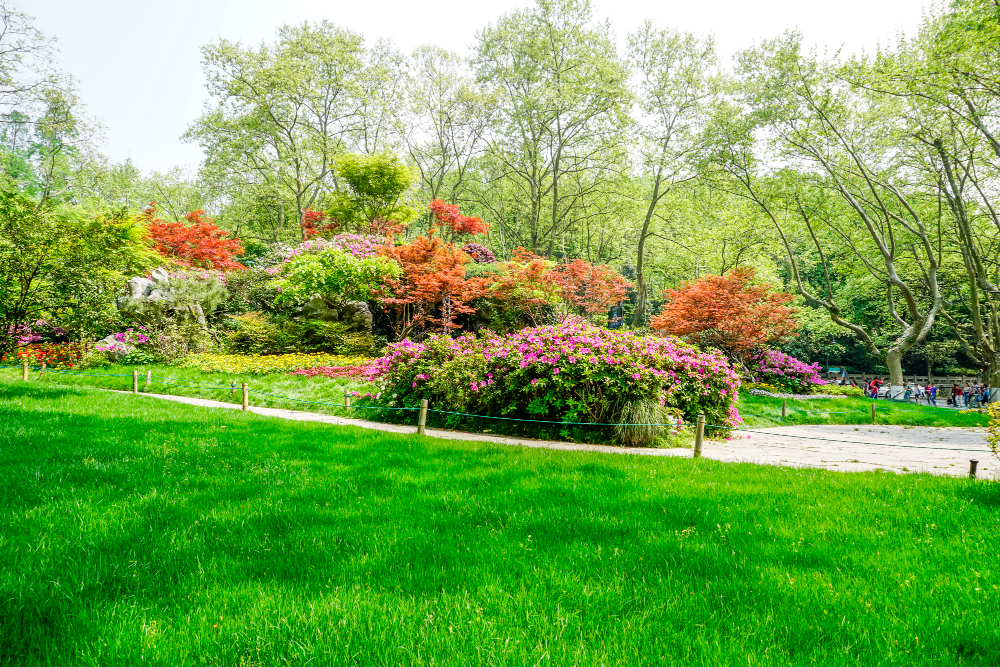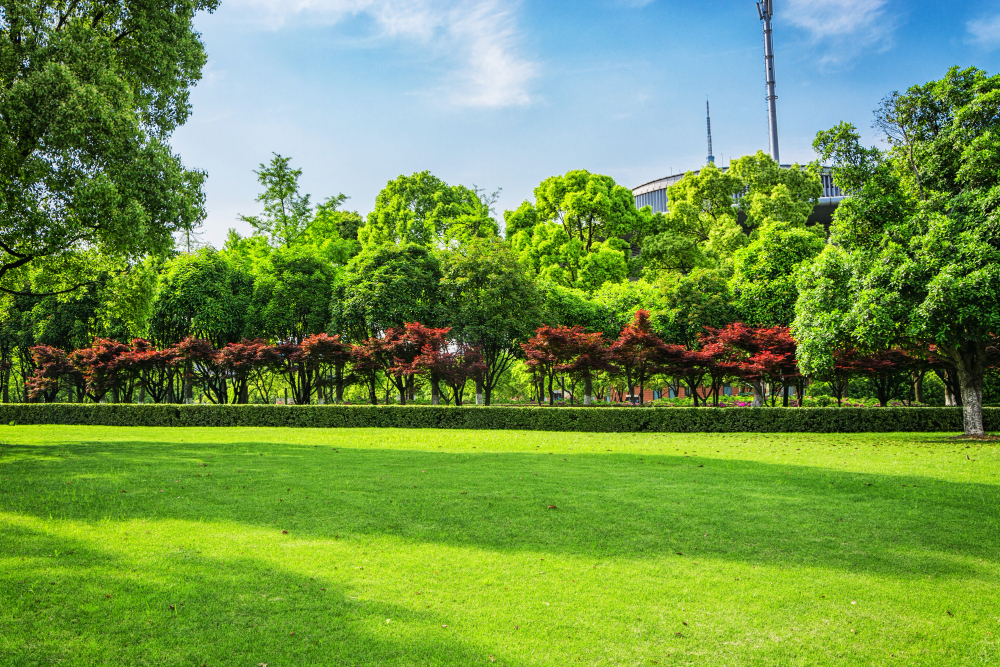Find the best tree removal services in Fort Bragg, CA. Learn when to remove, permit basics, and what to expect: assessment through cleanup.

If you live on the Mendocino Coast, you already know: trees here are gorgeous—and demanding. Salt-laden winds, winter storms, and shallow coastal soils can turn a once-majestic tree into a real hazard. Picking the best tree removal services in Fort Bragg, CA isn’t just about who has a chainsaw; it’s about choosing a team that understands coastal conditions, safety protocols, local rules, and complete site cleanup so your property ends up safer and cleaner than before.
Below is your practical guide to doing this right—plus why Barrera’s Oceanfront Lawn Care & Maintenance is a local, reliable option when removal (not just trimming) is the smart move.
Why Safe Tree Removal Matters on the Mendocino Coast
Coastal trees live a tougher life. Salt spray and prevailing winds can cause asymmetric canopies and weak attachments; saturated soils after long rains reduce root grip; and sudden “sundowner” gusts can turn heavy limbs into projectiles. That mix makes safety a top priority:
- Overhead hazards: Dead or diseased limbs above walkways, driveways, or living areas are a liability.
- Windthrow risk: Tall conifers with shallow roots can topple during storms, especially after soil becomes waterlogged.
- Fire safety & debris: Deadfall and brush increase fire risk and insurance headaches; cleaning up promptly matters—often under county burn and disposal rules (more on that below).
Good removal work protects people, structures, fences, vehicles, rooflines, and utility service. Great removal work also leaves the site tidy and ready for your next landscaping step.
Signs a Tree Probably Needs Removal (Not Just a Prune)
Structural red flags
- A pronounced lean that’s getting worse.
- Cracks in the trunk or at major unions.
- Heaving soil or exposed roots on the “lifted” side of a leaning tree.
Biological decline
- Extensive dieback in the crown.
- Mushrooms or conks at the base (possible root or butt rot).
- Bark sloughing over large areas.
Location & utility conflicts
- Major limbs overhanging bedrooms, kids’ play areas, parking spots, or the only driveway exit.
- Trees encroaching on power lines or service drops (these require extra care and sometimes utility coordination).
If you’re unsure whether a tree can be saved with targeted pruning, ask for a site assessment first. A reputable local crew will inspect the tree’s health, size, and surroundings and recommend the safest path forward.
What “Best Tree Removal Service” Looks Like in Fort Bragg
Safety-first planning and methods
The crew should develop a removal plan based on tree condition, lean, canopy weight distribution, drop zone, targets below, and rigging needs. On coastal lots with tight access, controlled lowering (piece-by-piece) is often the safest approach. Expect strict protocols to protect roofs, siding, fencing, and gardens—and a plan for traffic/pedestrian control if needed.
Local know-how & complete service menu
In Fort Bragg, good removal companies rarely “just cut it and run.” They typically offer inspection, trimming/pruning (when removal isn’t required), debris/brush hauling, and seasonal cleanups so the property is actually safer when they leave.
Clear communication & cleanup
The best crews explain options in plain language, give a free estimate, then show up with the tools to protect the site and clean up thoroughly—hauling branches and brush, not leaving you with an unexpected burn pile and county permits to figure out.
Barrera’s Oceanfront Lawn Care & Maintenance at a Glance
Who they are: A Fort Bragg-based landscaping and tree-care team offering tree removal, trimming, pruning, brush hauling, and seasonal cleanups. They emphasize safe, professional work and invite homeowners to request free estimates.
What they do related to tree work:
- Tree removal: Safety-focused, plan-driven removal for hazardous, dead, or storm-damaged trees.
- Tree trimming & pruning: Targeted cuts to improve health, reduce risk, and enhance appearance (often a prudent first step before considering removal).
- Brush hauling / cleanups: Quick removal of branches and vegetative debris to reduce fire load and keep your site tidy.
Why it matters: Having one local provider handle assessment, trimming (if viable), removal (if needed), and debris hauling keeps your project coordinated and your property protected from start to finish.
Permits, Fire-Safe Disposal & Coastal Rules (Know Before You Cut)
Tree work on the North Coast sometimes intersects with city/county processes and air-quality rules—especially when disposal involves burning or when a tree is dead/diseased/hazardous in a way the county regulates.
1) Hazardous tree removals & the County affidavit
Mendocino County adopted an urgency ordinance that exempts certain dead, diseased, or hazardous tree removals if you complete and submit the county’s Hazardous Tree Removal Affidavit with required attachments. That helps streamline safety-driven removals. Always verify the latest form and criteria with the County’s Planning & Building Services before proceeding.
2) City process (inside Fort Bragg city limits)
If you’re in city limits, check Fort Bragg’s applications and permit resources first. Requirements can vary by location, zone, and project scope. When in doubt, contact City Hall or Community Development for guidance.
3) Debris disposal & burning rules
If you plan to burn vegetative debris on your property, Mendocino County Air Quality Management District regulations apply. In many cases, an air-quality/burn permit is required and burning is only allowed for vegetative matter grown on the property, typically on permissive burn days. Additional rules cover minimum drying times for wood and brush, and some situations may also require a Smoke Management Plan. Check with MCAQMD or your local fire agency before you light anything.
Most homeowners prefer to skip the paperwork and smoke altogether—hire a service that hauls away debris and keeps you compliant without the hassle.

Services You’ll Likely Need Before, During, and After Removal
Pre-removal assessment (is removal necessary?)
A site visit should evaluate the tree’s structural integrity, species-specific risks, proximity to structures and lines, and whether targeted pruning can mitigate risk. Good contractors in Fort Bragg offer this as part of the free estimate process.
Trimming or pruning (when removal isn’t required)
Selective trimming can remove hazardous limbs, improve wind-flow through the canopy, and reduce the chance of limb failure—extending the life of a healthy tree. On the coast, thinning for air circulation can be especially helpful.
Full removal (when safety or site plans demand it)
If the tree is dead, structurally unsound, storm-damaged, or in the way of essential work, a controlled removal with proper rigging is the safe option. Expect a plan tailored to your site and clear communication on how the crew will protect structures and landscape.
Debris & brush hauling
After felling and limbing, prompt debris removal reduces fire fuel, tidies the site, and spares you from navigating burn-permit logistics. This is where a team with dedicated hauling services shines.
How the Process Works (Step by Step)
1) Initial call & estimate
You reach out, explain your concerns (e.g., leaning pine, dead cypress, wind-snapped limb). The contractor schedules a visit, inspects the tree(s), and provides a free estimate with scope and timing.
2) Permits & compliance check
If removal qualifies as dead/diseased/hazardous, you may be able to submit the county’s affidavit. If you’re in city limits or near sensitive zones, check municipal requirements. Decide up front whether you want debris burned (permit needed) or hauled. Most homeowners choose hauling.
3) Scheduling & prep
The crew plans rigging points, drop zones, and protection for roofs, windows, garden beds, and hardscape. If utility lines are nearby, they’ll advise you on next steps.
4) Removal day
Expect staging of equipment, safety briefing, and progressive dismantling from the top down if space is tight. Limbs and trunk sections are controlled to the ground to avoid impact damage.
5) Cleanup & haul-off
Wood and brush are gathered, loaded, and removed. A final rake/blow makes the site usable right away—no surprise debris piles left behind.
Cost Factors (and How to Save Without Cutting Corners)
Every job is different, but these variables drive time and price:
- Height & diameter: Bigger trees mean more rigging, more cuts, and heavier pieces.
- Condition & lean: Dead, brittle wood or a severe lean demands extra caution.
- Access: Tight backyards with no equipment access take longer (more piece-by-piece lowering).
- Targets below: Roofs, sheds, fences, decks, garden beds, and cars require added protection and slower work.
- Urgency: Storm damage or imminent hazards may require emergency scheduling.
Ways to save (safely):
- Combine services: If you already plan seasonal cleanup or brush removal, bundle it with the removal to consolidate crew time and hauling.
- Trim elsewhere on the property: If the crew is already mobilized, addressing other risky limbs can be cost-efficient.
- Opt for haul-off: Faster than DIY burning and often cheaper once you factor in permits, drying times, and your own labor (plus, no smoke complaints).
How to Choose the Best Tree Removal Services in Fort Bragg, CA (Checklist)
- Local presence & references: Fort Bragg-based team with a service history in the area.
- End-to-end capabilities: Assessment, pruning/trim, full removal, and debris/brush hauling so you’re not left with a mess.
- Clear estimates & communication: Free quotes, site-specific plans, and straight answers to safety and cleanup questions.
- Compliance savvy: Comfortable advising on hazardous-tree affidavits and debris disposal options (burn permits vs. haul-off).
- Proof of care: A gallery or recent photos showing careful work and tidy results.
Frequently Asked Questions
Do I need a permit to remove a dead or hazardous tree?
Mendocino County allows certain dead, diseased, or hazardous trees to be removed under an affidavit process (with required attachments). Rules change, so verify with Planning & Building Services before cutting. If you’re inside Fort Bragg city limits, check the City’s permit/application resources as well.
Can I burn the limbs and brush after removal?
Sometimes—but you’ll typically need an Air Quality permit and must burn only vegetative matter grown on your property, usually on permissive burn days. Minimum drying times apply for logs, brush, and weeds. Many homeowners avoid the hassle and simply book professional brush hauling.
I’m not sure the tree needs to come down. Can trimming solve the problem?
Often, yes. Strategic trimming or pruning can reduce risk by removing deadwood and improving airflow through the crown. A site assessment will help you decide what’s safest and most cost-effective.
Why This Matters Right Now
Coastal weather is unpredictable, and deferred tree maintenance tends to get more expensive over time. Whether you’re protecting a rental, a forever home, or a vacation property near Noyo Harbor, getting a professional opinion before the next storm is a smart move. With a local team that handles trimming, removal, and cleanup—in one coordinated plan—you reduce risk and avoid the paperwork/timing issues that can bog down DIY approaches.
Ready to Make Your Property Safer?
If you’re looking for the best tree removal services in Fort Bragg, CA, start with a free, local assessment and a clear plan for safety, compliance, and cleanup. Barrera’s Oceanfront Lawn Care & Maintenance serves Fort Bragg and the Mendocino Coast with tree removal, trimming, pruning, brush hauling, and seasonal cleanups—so you’re covered from first look to final rake-out. Call 707-357-3842 to get on the schedule.
